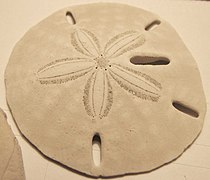“Do you think we’re lost?” Margery asks. “Should
we turn back?”
“I don’t know.”
I pause to catch my breath. “We’ve already come so far.” The thought of retracing our steps back to the trailhead
feels overwhelming, scrambling up and down rocky steep embankments, clinging to
tree roots and vines. Are we even on the correct trail? I imagine my husband
reading newspaper headlines: Two elderly
gringas missing in Colombian jungle. He’d had his doubts about this solo
trip of mine.
We weigh the evidence.
“Trail sign said a forty-five minute walk,” says my friend. “It’s already been almost
two hours.”
“I hear the
ocean ahead,” I tell her, “but we don’t seem to be getting any closer.” The
trail supposedly leads to a mirador, a
lookout over the Caribbean. “Let’s go
on. We must be getting close.” Overhead loud claps of thunder accompany
advancing black clouds. Though we’re already wet from intermittent drizzles,
this storm sounds more serious. “Let’s try to beat this storm.”
We’re somewhere in the jungle in Tayrona
Park in Colombia’s Sierra Madre. Getting to know the Park was one of the main
reasons I’d given to my friend, who has lived many years in nearby Cartagena,
for my proposed trip to Colombia. I was so pleased she agreed to make this
journey with me.
Margery
and I met during Peace Corps training in 1964 in Kansas City. She was then posted
in southern Colombia, and I in Barranquilla on the Magdalena River near where
it flows into the Caribbean. Over the years we lost contact, until attending a
Peace Corps reunion there four years ago.
Petite,
sprightly Margery, wearing a Yankees baseball cap and sturdy shoes, leads the
way, clambering crab-like up the embankment. I follow, looking for footholds on
the root-ridden, muddy bank, thankful for my trekking stick, which helps keep
my weight off my left foot afflicted with painful plantar fasciitis. Did I
mention I am wearing my old Keen sandals? We hadn’t decided on our destination
when we took the bus this morning into Santa Marta so my trekking shoes rest
undisturbed back at the house.
We come across
another wooden sign relating in lofty words the sacred nature of the area for
the now-extinct indigenous Tayrona people. “I wish they’d cut the poetry and
just say how much further we must go,” I grumble.
Just when we
think we’ve conquered the last of the arroyos,
another appears around the bend. I groan and struggle to make my way up the
opposite bank, holding out my trekking stick for Margery to give me a pull. My
turquoise clam-digger pants are smeared with mud as I slip and slide. Back on
flat ground, I lurch to rest on an inviting boulder, where I loosen my backpack
and lean back to gaze at the lush canopy, dotted with wild-haired palm trees.
A
parade of leaf-cutter ants trails up a tree trunk. In the understory I
recognize a kind of wild philodendron and huge birds’ nest ferns. Such peace in
this spot with only birdsong to be heard.
A rustling sound
in the leaves behind me startles me.
“Look! Monkeys!” I point up into the waving
branches where three red howler monkeys make their way. I briefly wonder if
they’ll come closer. Are we in danger? But they show no interest in us.
The roar of the
ocean sounds closer. A wooden sign with a red arrow indicates we’re on an
official trail, though not the one we set out to follow.
“I see the
thatched roof of the mirador!” cries
Margery.
Heartened, we wend
our way up the steps to the lookout atop a small hill. The sky is overcast, a
shade lighter than the pewter sea. Below us, waves break against a dark, jagged
coastline, occasionally broken by stretches of white sand.
We snap some
photos, proof that we are here.
Yet the question remains: how far to the
trailhead? Just then a human being appears coming from the opposite direction.
He’s young, barefoot and looks like he might speak English. He does. His name
is Joe. He’s been travelling around South America and now plans to return to
Maryland for Thanksgiving.
“How much
further do we have to go?” We ask in unison. We describe our odyssey and our hike
of two hours.
“It’s not far at
all,” he reassures us. “If you want I’ll go with you. It’s flat most of the
way.”
Words sweet to
my ears.
We tell him that
we’d been Peace Corps Volunteers here in Colombia over fifty years ago.
“I’m thinking about
joining the Peace Corp,” he says.
As we slosh through puddles in the trail (my
sandals weren’t a bad choice after all), Margery and I tell him that it was a
life-changing experience for us, influencing the future paths we’d follow. Our
choice of the Peace Corps maybe is proof of our genetic need for new
adventures.
At last. The
trailhead. We bid adios to Joe, thanking him for his company and head to the
highway to try to flag down a bus back to Santa Marta. Just then the sky opens
and releases its deluge. My sandals are packed with mud, my hair pasted to my
head, and it feels wonderful, though I would like to find a bathroom.
Margery and I
decide we’ve earned medals for our accomplishment. And we’re just starting.
Another day we plan a pilgrimage to Aracateca (alias Macondo), the birthplace
of Colombia’s Nobel winner, Gabriel García Marquez, author “One Hundred Years
of Solitude.”
A son called
this my “eat, pray and love” trip. Perhaps it is.




















